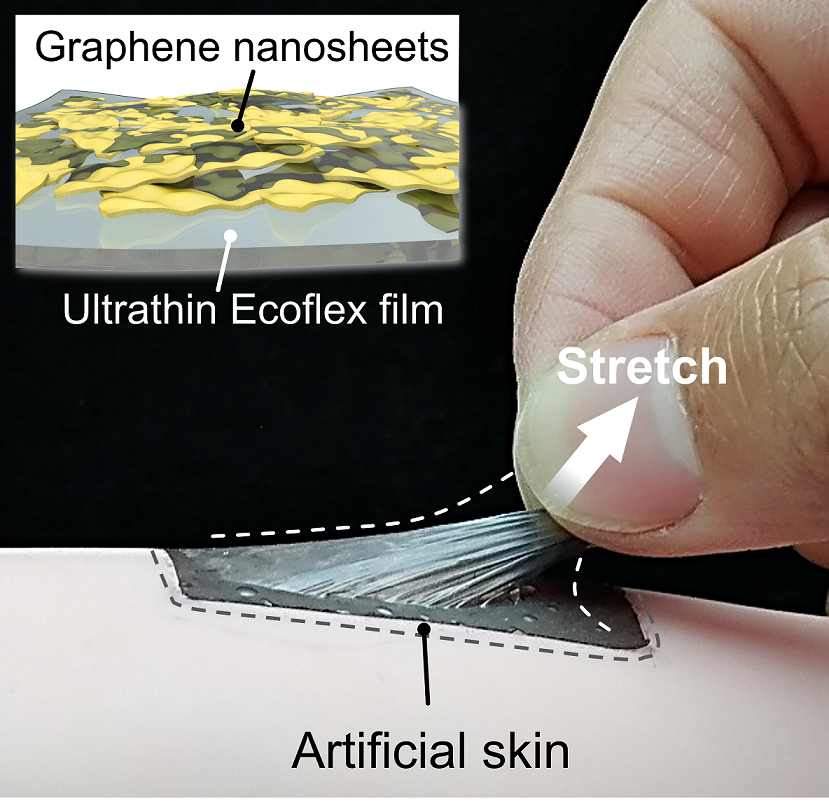Prof. Tao Chen’s team at the Chinese Academy of Sciences’ (CAS) Ningbo Institute of Materials Technology and Engineering (NIMTE) has proposed a strain-perception-strengthening (SPS) enabled biomimetic soft skin that can transform from tactile to pain perception dynamically. Advanced Functional Materials published the research.
 The SPS-enabled artificial skin for pain perception. Image Credit: Ningbo Institute of Materials Technology and Engineering (NIMTE).
The SPS-enabled artificial skin for pain perception. Image Credit: Ningbo Institute of Materials Technology and Engineering (NIMTE).
Creatures with biological soft tissues (e.g., skin) can achieve self-protection via passive strain mechanical stiffening and active perception of external stimuli. Active protection can detect risks in advance of strain mechanical stiffening, considerably reducing the risk of harm.
However, achieving efficient active protection, which necessitates an acute and quick pain signal produced by the sensory system, remains a challenge.
To solve this problem, NIMTE researchers developed an elastic and conductive film (ECF), which is made up of elastomeric thin films and integrated graphene nanosheets with a structural interface that is interlocked. Soft skin has a dynamic transition function from tactile to pain perception as per the SPS effect.
The gauge factor and strain are positively correlated in the two-dimensional (2D) graphene-based ECF, which is analogous to the sensory systems of animals. Furthermore, the biomimetic skin that has been synthesized can accomplish normal tactile perception under low strain and pain perception above the strain threshold.
Furthermore, the strain-perception-threshold value can be adjusted from ~7.2 to ~95.3%, indicating that it has a lot of promise in the development of SPS-related applications.
Under conditions such as unidirectional overstretching of muscular tendons and irregular stretching deformation of hand skin, the SPS-enabled sensory system can successfully replicate the pain experience of human tissues.
Scientists at NIMTE created a bionic pufferfish model based on the ECF as the self-supported artificial skin to sense noncontact and contact mechanical stimuli and actively inflate itself to a 3D distortion, inspired by the pufferfish. Due to the SPS effect, the overinflated 3D deformation could be efficiently recorded.
The SPS effect-enabled notion of biomimetic soft skins has promising applications in the realms of human-machine interface, smart prostheses, and soft robotics.
The Natural Science Foundation of China, Zhejiang Lab’s Open Research Projects, the Sino-German Mobility Program, and the Chinese Academy of Sciences’ Key Research Program of Frontier Sciences jointly contributed to this research.
Journal Reference:
Xiao, P, et al. (2022) Biomimetic Skins Enable Strain-Perception-Strengthening Soft Morphing. Advanced Functional Materials doi:10.1002/adfm.202201812.